Learn how to mill your own flour at home. Milling whole grains really isn’t as hard as some people think, and it gives a ton of nutritional value to the meal. This is an easy way to make wheat flour at home with just a few simple steps.
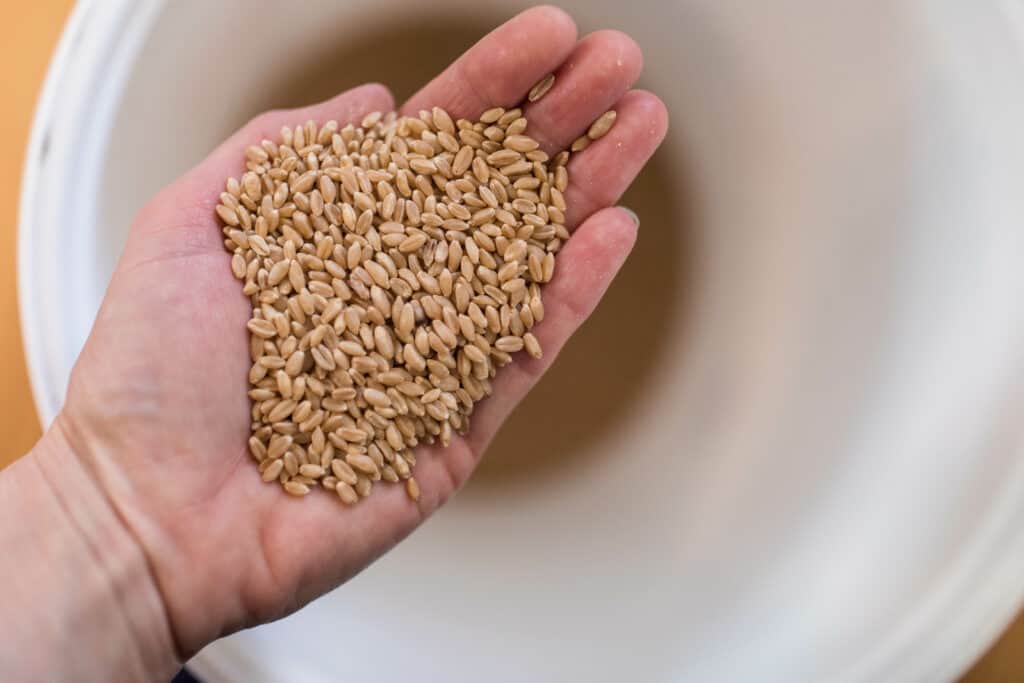
About 8 years ago, I bought my first flour mill. I became interested in milling my own grains after I heard that over time, even a couple of days, milled grains lose a ton of their nutritional value as they sit in the cupboard.
Once I heard this, I became interested in buying bulk grains and milling them at home. I figured it wouldn’t be that hard to mill my own grains once I had the tools.
Ever since then, I have been supplying my family with super nutritious breads and homemade baked goods made with fresh-milled flour.
So today, I want to share with you how to mill your flour at home, no matter what type of grain mill you have.
Benefits of Milling Your Own Grains:
Health Benefits: Commercial flour has little to no nutrients compared to fresh flour. Nutrients start to decrease after a few hours of milling flour.
Shelf life: Wheat berries can last 20+ years. On the other hand, the one con is that freshly milled flour only lasts a few days at room temperature.
Expense: Buying wheat berries in bulk can help save money. See the best places to purchase wheat berries here.
Superior flavor: Freshly milled flour has a slightly nutty flavor and overall a much fuller and complex flavor than store-bought flour.
Greater variety of grains: Not only can you grind your typical hard wheat berries or soft white wheat, but you can also grind other grains like brown rice, quinoa, oat flour and more. I love the fact that I can mill harder to find (and more expensive) ancient grains like einkorn or kamut.
This post contains affiliate links, which means I make a small commission at no extra cost to you.
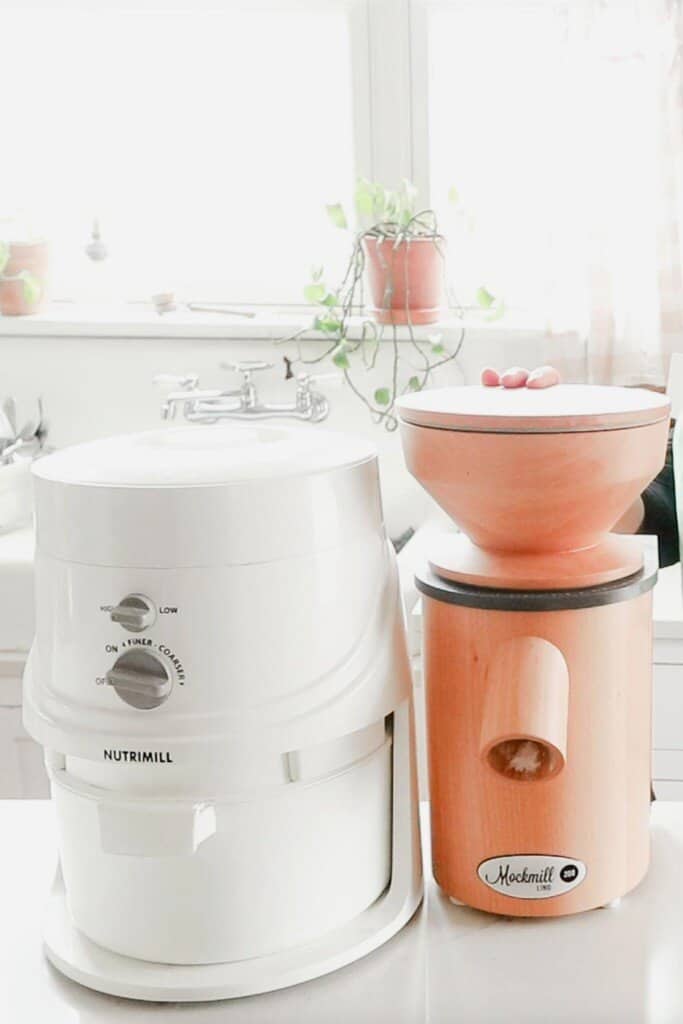
Types of Mills:
Electric mills: Such as the Nutrimill, Mockmill, or even mill attachments for stand mixers.
Hand mills: Hand crank manual grain mills are a fun option today. No electricity is needed, and it comes with an arm workout.
Other: This would include options like coffee grinders, high-powered blenders, or food processors.
How to Mill Your Own Flour at Home: Three Ways
There are multiple types of grain mills on the market today. I did a whole post on the best grain mill, but the ones I’ve personally used are the Nutrimill and Mockmill grain mills.
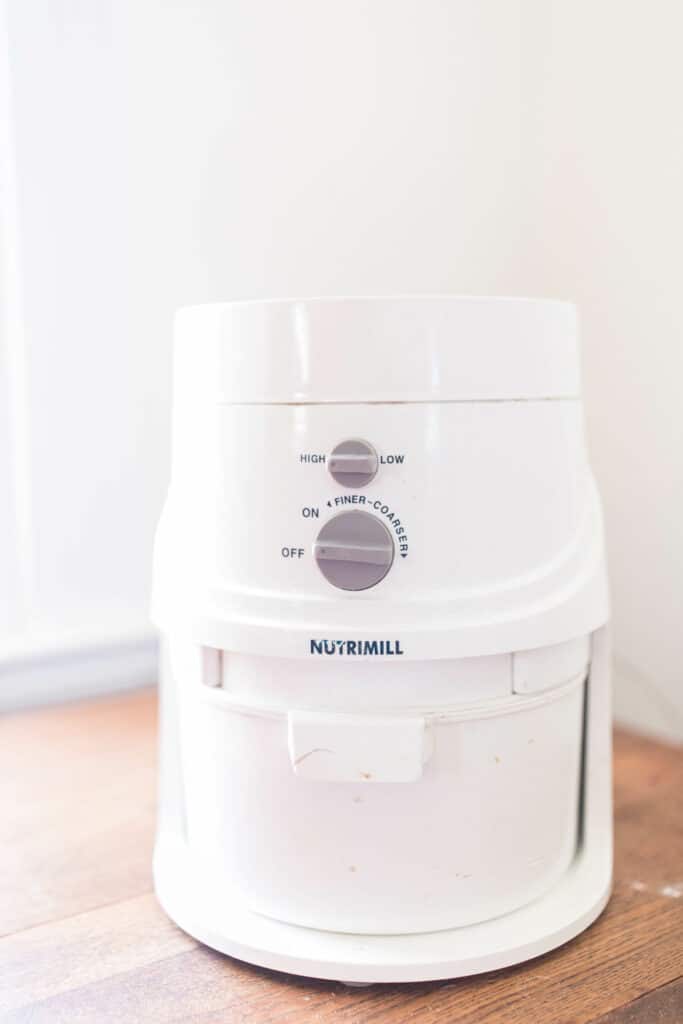
How to Use a Nutrimill
On the NutriMill I own, there is a lid that goes on the very top that you can take off. Inside is a place where you pour in the grains. They will flow down through two holes and into a bowl at the bottom of the NutriMill.
Simply use the handle to pull the bowl out from under the NutriMill, twist the lid, and there is flour inside. The two knobs on the front allow you to choose the coarseness of the flour, and also how fast the grains will be ground.
The bottom knob controls the coarseness and the top knob controls the speed.
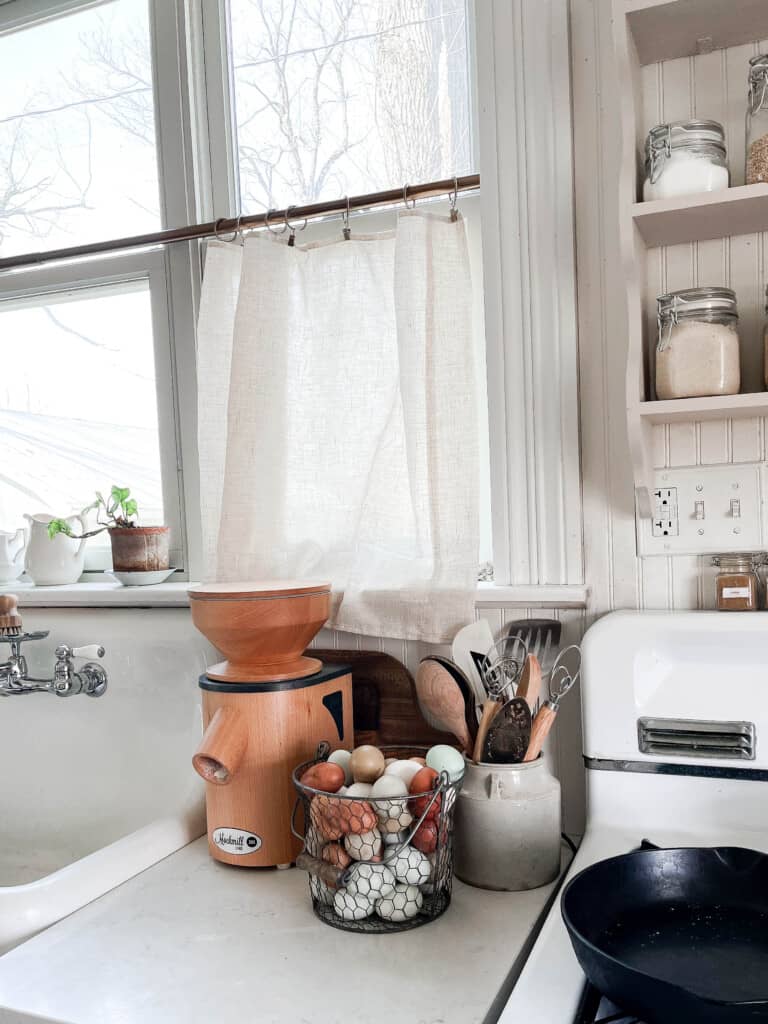
How to Use the Mockmill
Grasp the hopper and adjust to the desired coarseness (if using the original Mockmill, you would simply adjust the lever). The lower the number, the finer the flour.
Place a bowl under the dispenser.
Turn on the electric mill.
Add wheat berries to the hopper and watch it work its magic.
If the flour is too coarse for your liking, adjust the level and re-mill to your preferred texture.
How to Make Flour with a Blender and Other Options
If you have a high-powered blender like a Vitamix, you can also grind your own whole-grain flour at home. Add whatever variety of wheat berries you have to the blender.
Start the blender on low speed, then quickly move to high speed. Grind for 60 seconds. Keep blending until the desired consistency is achieved. The longer you grind the grains, the finer the flour.
This could also work with a high-powered food processor or coffee grinder, but I would not try this with a regular blender or food processor. It could easily burn out the motor – an expensive mistake.
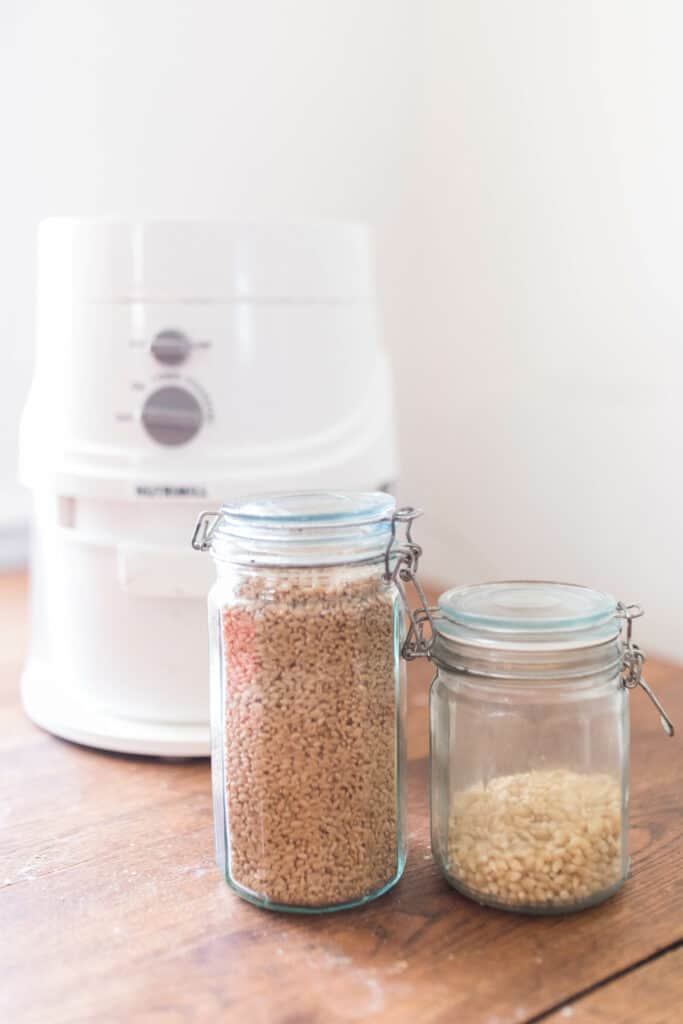
Determining the Coarseness of the Grains
For my sourdough starter recipes, I use the medium-coarse setting to grind my whole-grain wheat. I use this setting for almost everything.
When I am making cornbread, I will use the coarsest setting to make cornmeal.
You can do a finer consistency, especially if you are using the flour to make pastries, cakes, cookies, or pies. The finer you want the grain to be, the longer it will take to mill.
With the Mockmill, you can re-mill your grains if the flour was ground too coarsely, whereas with the Nutrimill you cannot.
How to Store Homemade Flour
Homemade flours only stay fresh for a few days at room temperature, so I recommend only milling what you need. If you do have extra, you can store it in the fridge for up to a week or in the freezer for up to six months. Freezing does remove some of the moisture and can give the grains an off flavor.
Where to Store Whole Grains
When I buy bulk whole grains, I simply transfer them from the bag they came in into a 5-gallon bucket with a twist-top lid.
I discovered twist-top lids for my 5-gallon buckets a few years ago. Before this discovery, I used the lids where I would have to snap them on and pull them off, but they were difficult to work with.
Now, all I have to do is twist off the lid to get to the whole grains and twist the lid back on to keep the grains airtight and safe from mice and other small animals.
Ask me how many flour bugs I found in my wheat when I thought just rolling up the bag was sufficient. Trust me – the bags are not sufficient, especially for long-term storage!
Types of Whole Grains
Hard White Spring Wheat
The most common grain I mill is Hard White Spring Wheat. You can buy Soft White Spring Wheat and even Soft Red Spring Wheat.
Soft wheat is really good for pastries, such as cakes and biscuits. They have a lower gluten content, so the flour is not suited for bread. I have purchased soft wheat before and used it for desserts, but I do not make desserts very often, so I prefer to just buy hard wheat and use it for everything. However, if you do a lot of baking, I would recommend purchasing both hard and soft wheat.
Here is the wheat I get: Prairie Gold Organic Hard White Spring Wheat
Einkorn
I also really love to mill whole grain einkorn. Einkorn is an ancient wheat grain that is easier to digest and healthier than modern wheat. It is a good source of protein, iron, fiber, and B vitamins. Modern wheat has been genetically altered for higher yields and more gluten. Most people can’t digest modern wheat very well but can digest ancient einkorn much more easily.
Popcorn
The other grain that I mill is popcorn. I know it is a little unusual, but years ago I read you can mill popcorn. Now, I am hooked. I love to mill popcorn into cornmeal to use for cornbread.
I put my mill on the coarsest setting and the popcorn runs right through. I use the same popcorn I buy at Aldi that we also eat for a late-night snack popped in some coconut oil on the stove.
Oats and Rice
In the past, I have experimented with milling oats to make oat flour and rice for rice flour to make pancakes, but because of my love for sourdough, I mainly just mill hard wheat.
Where to Buy Whole Grains
Amish Community
When we lived in our old farmhouse, my sister and I would drive to an Amish community not too far away and purchase grains in bulk from their store. We would drive there every six months and buy a couple of gallons of raw honey, a couple of gallons of coconut oil, a couple pounds of raw butter, 50-pound bags of oats, hard red or white wheat, and a 10-pound bag of popcorn.
I haven’t found the local Amish community near our new area, so I only drive out to the old one for honey very rarely.
Country Life Natural Foods
A couple of years ago, a lady I know started a co-op with Country Life Natural Foods based out of Minnesota. I began to order from there along with a group of other women. Orders of $500 have free shipping, so that is always the total amount we aim for.
All I have to do is give her my order and drive to her house to pick it up. Country Life Natural Foods has some pretty great prices, so that is where I now buy organic hard wheat.
They also sell bulk beans, oats, dates, figs, and nuts, among other things. So now I pretty much exclusively buy my grains from this co-op.
Azure Standard
In some areas, people have access to the Azure Standard co-op, which is based out of Oregon. I have ordered from them before, but their prices were high for me. Depending on where you live, those might be very competitive prices.
However, everything is a little cheaper in the Midwest, so getting prices considered inexpensive in Oregon was still really expensive for me.
UPDATE: I got on the Azure Standard website to grab a link for this post and found they had a great price on organic raw cheese. I signed up for the local drop again.
Jovial Foods, Thrive Market, and Amazon
Another grain that I like to buy, that I mentioned above, is einkorn. I have bought it from Jovial Foods, Amazon, and Thrive Market. Thrive Market is a great place to buy a whole bunch of healthy food supplies. I have a membership there that is $50 a year, but for the number of items I purchase, it is worth it. It saves me a ton of money and sometimes has cheaper prices than Amazon, where I also have a prime account.
Reasons to Mill Flour at Home
I know milling your own grains sounds really complicated, but it is actually so simple and it is also the only way to get fresh flour.
Even if you are buying flour from your local store that says it is freshly ground, it still probably wasn’t ground that hour, or even that day or week.
Obviously, I highly recommend milling your own flour. It is really great for making your own sourdough starter. The hard red or white wheat is what I use to feed my sourdough starter and keep it healthy and active.
Milling your own grains is cheap, too.
Long-term storage: When you buy a 25 or 50-pound bag of wheat berries, they will keep for a very long time, possibly years when stored properly. If you keep the grains in the 5-gallon buckets with the twist-top lids, you don’t have to worry about them going bad.
If you break down the prices between the whole wheat flour you can buy at the store, compared to the co-op, the co-op is much cheaper. All you need to do is secure a local source, and you will have freshly ground, healthy, and nutritious flour.
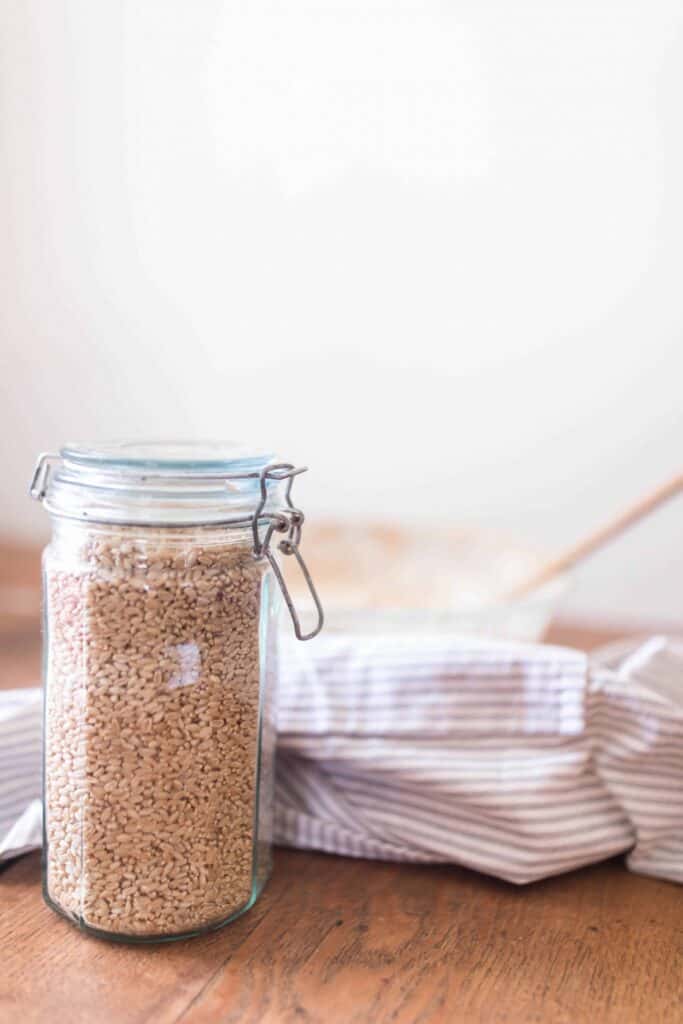
How to Use Fresh Milled Flour
Freshly milled flour is a little different than regular whole wheat or all-purpose flour. It absorbs less liquid than all-purpose and it takes longer to absorb that liquid, so you will want to decrease the amount of flour added by 2-3 tablespoons per cup of flour.
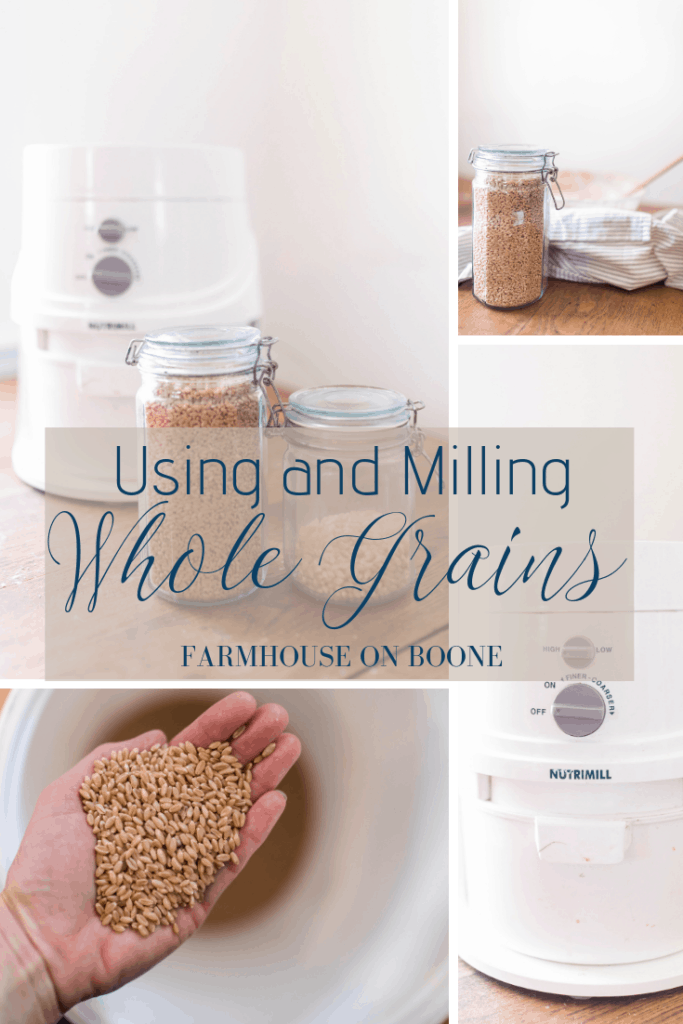
FAQ:
Flour should just be made from wheat. Because commercial flour loses its natural nutrients, many are typically added back in a synthetic form, such as folic acid.
First, grind your wheat berries. Work the fresh flour through a fine mesh sifter into a bowl. Place what is left in the sifter to the side.
Place the sifted flour back into the sifter and run it through one more time. There are machines for this, too. You can also find recipes for adding cornstarch to freshly ground flour to make all-purpose flour.



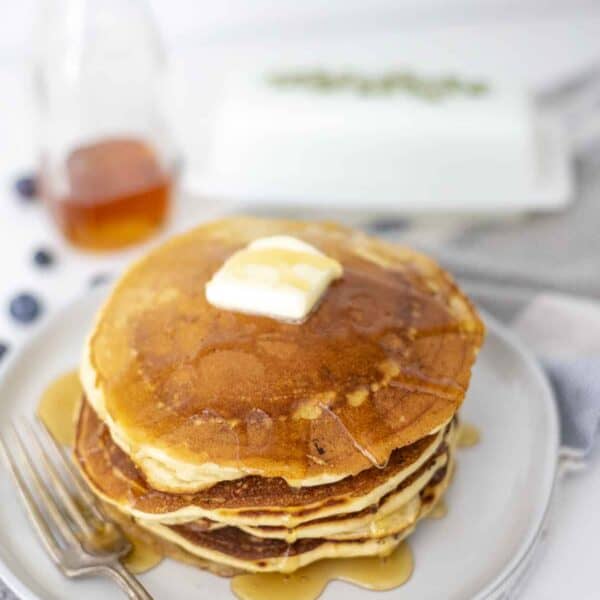






I absolutely LOVE all of your homesteading information. Can you tell me if you have an opinion on using a Kitchenaid Mill attachment?
I’ve never used it so I can’t really tell you my experience. It has a smaller hopper and I hear it takes a longer time to mill.
I have a Wonder Mill with 3 settings: Pastry, Bread, Course. There is a quarter turn between each setting. Do you recommend Bread or Course setting, or in between those two for your Sourdough Artisan Recipe? How would you describe what the consistency of the flour should be, powdery or course?
Thank you very much!
I try to grind it more finely.
I am thinking of grinding my own flour. I have a vitamix and could get a separate container from them for that. In your experience / opinion, would it be better or easier to just get a grain mill? Also, do you grind it or mill it just when you need it or do a good bit at a time?
do you have a recipe for bread with fresh milled grains
Yes! This is one of my favorites: https://www.farmhouseonboone.com/how-to-make-whole-wheat-sourdough-bread
Do you sift at all? I’ve found if I use whole wheat home milled flour, my sourdough is extremely dense
I do not usually sift my flour. Sometimes you have to adjust recipes a bit with home milled flours.
Do you have a post about the adjustments? I’ve been milling my flour for a few months and keep attempting to figure it all out hah.
That is a great question. I’ve always done a 1 for 1 swap. But other people have other opinions. I’ve seen people say you need to add 1/4 cup more per cup of flour and another say almost 1/4 cup less flour per cup. It is mostly based on consistency and feel. So that was probably not super helpful. Sorry.
Do you grind your own flour for many of the recipes on your blog? Just got my first grain mill and I’m itching to try a recipe out, but I don’t know if any recipe can be converted from All-purpose flour to freshly milled flour.
I do for some! And many you can swap with freshly milled. I usually make note of swaps. Here is one recipe where I address that in the FAQ: https://www.farmhouseonboone.com/easy-artisan-sourdough-bread
How do you make all purpose flour though? All of this is whole wheat if you mill it yourself right?
Hi Lisa,
If possible, please describe your process for storing wheat in more detail. I know some people freeze grains first (prior to storage), but I noticed moisture in the container or bad when I tried this, from some condensation. I’ve also heard using food grade diatomaceous earth is a safe option, but that makes me a little nervous. Thank you!
Warmly,
Jessica
I love this post! I have used the same mill and grains and even order from Country Life. I have also ordered the gamma lids from amazon, but I have been able to source an almost endless supply of 3-5 gallon buckets for free. Our grocery store bakery buys the buckets full of icing, and is willing to give them to use when they are finished. We save a few bucks and give the buckets a little more life before they hit the recycling plant. 🙂
My question is, why do you not use Einkorn for everything, instead of the hard white wheat? I’m about to finish up the last of my current bucket of hard white and i’m trying to decided if I should go with just Einkorn or order both. Thanks so much!
I mix Einkorn with my hard red or white UNLESS you are sensitive to gluten . I have made einkorn pasta ground very fine .. works wonders !
Lisa what about the plastic 5 gal buckets? I haven’t done any research so I really don’t know. I just have a life long dislike for plastic in any form. At the same time, there are some things that are safer than others. Also, about the Einkorn flour: how does that compare to use in your sourdough starter recipe or just any of your other breads? Thanks . God bless you and your sweet family.
Resa , the storage buckets she is talking about are FOOD GRADE PLASTIC, I use GAMMA lids for them and NO bugs , critters or spoilage happens… LOOK up and do research on FOOD GRADE STORAGE BUCKETS , you will be surprised how safe they are especially when you use reusable storage bags with them.. AFTER the grains are MILLED , I store ALL of my flours in Mason jars with labels what flour grains it is from …
Can you use this process for almond flour?
You would make that in a good blender. I wouldn’t think the mill would be best for that.